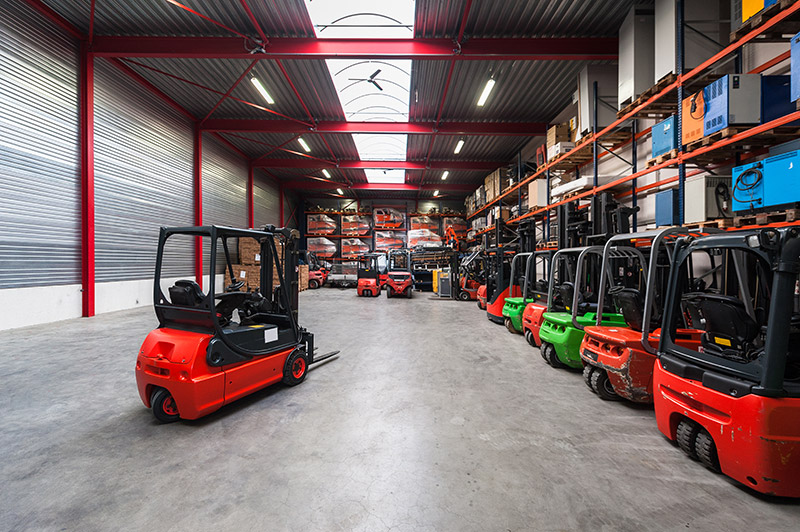In the fast-paced world of warehouse operations, every second counts. Downtime caused by equipment failure can disrupt workflows, delay shipments, and inflate operational costs. One of the most effective ways to avoid these issues is through a robust preventative maintenance program for your warehouse equipment. By proactively maintaining your machinery, you not only save time and money but also ensure a safer and more efficient work environment.
What Is Preventative Maintenance?
Preventative maintenance involves regularly scheduled inspections, servicing, and minor repairs of equipment to prevent unexpected breakdowns. Unlike reactive maintenance, which addresses issues after they occur, preventative maintenance identifies and resolves potential problems before they escalate into costly repairs or downtime. The U.S. Department of Energy reports that a proactive maintenance approach can yield substantial cost savings and improve equipment reliability.
Why Preventative Maintenance Matters
1. Minimizes Downtime
When a critical piece of equipment, like a forklift or conveyor belt, fails unexpectedly, it can bring your operations to a standstill. Preventative maintenance reduces the likelihood of unplanned breakdowns by ensuring that all equipment is operating optimally. This keeps your workflows uninterrupted and deadlines on track.
2. Reduces Repair Costs
Addressing minor issues early is far less expensive than dealing with major repairs or complete replacements. According to Plant Engineering Magazine, preventative maintenance significantly lowers the total cost of ownership by minimizing emergency repairs and reducing overtime labor costs.
3. Extends Equipment Lifespan
Proper maintenance keeps your equipment in good condition, allowing it to perform efficiently for a longer time. This not only delays the need for costly replacements but also maximizes the return on your initial investment.
4. Enhances Workplace Safety
Faulty equipment is a leading cause of workplace accidents. A poorly maintained forklift, for example, can result in dropped loads, collisions, or other dangerous incidents. Regular inspections and maintenance ensure that equipment meets safety standards, creating a safer work environment for your team. According to OSHA, regular equipment maintenance is a key factor in reducing workplace injuries.
5. Improves Productivity
Well-maintained equipment operates more efficiently, reducing delays and ensuring smooth workflows. When machines function as intended, employees can complete tasks faster and with less frustration.
Key Warehouse Equipment to Maintain
Some of the most critical pieces of equipment in a warehouse include:
- Forklifts: Inspect tires, brakes, hydraulic systems, and batteries (for electric models) regularly. Replace worn or faulty components with high-quality aftermarket forklift parts to maintain peak performance.
- Conveyors: Check for proper alignment, lubrication of moving parts, and wear on belts or rollers. A malfunctioning conveyor can create bottlenecks in your operations.
- Pallet Jacks: Ensure wheels, handles, and lifting mechanisms are in good working order to avoid operator strain or inefficiencies.
- Racking Systems: Inspect for structural integrity, loose bolts, or signs of damage that could lead to collapses or unsafe conditions.
- Dock Levelers: Regularly test hydraulic systems, springs, and hinges to ensure smooth loading and unloading processes.
How to Implement a Preventative Maintenance Program
1. Create a Maintenance Schedule
Develop a routine maintenance schedule based on manufacturers’ recommendations and your equipment’s usage patterns. Some tasks may need to be performed daily, while others can be done weekly, monthly, or quarterly.
2. Train Employees
Ensure your team understands the importance of preventative maintenance and knows how to perform basic inspections. For example, forklift operators can be trained to check tire pressure, fluid levels, and warning lights during their pre-shift inspections.
3. Keep Detailed Records
Track maintenance activities, including dates, performed tasks, and any repairs made. This helps you identify patterns, predict when equipment will need servicing, and ensure compliance with safety regulations.
4. Partner with Professionals
While some maintenance tasks can be handled in-house, others require professional expertise. Partner with a reliable service provider for periodic inspections and complex repairs.
5. Use Technology
Modern CMMS software (Computerized Maintenance Management Systems) can streamline your program by tracking schedules, sending reminders, and providing real-time data on equipment performance. This ensures no task is overlooked and keeps your operations running smoothly.
Signs Your Equipment Needs Attention
Even with a preventative maintenance plan, it’s essential to stay vigilant for warning signs of equipment issues, including:
- Unusual noises or vibrations
- Leaks or fluid drips
- Difficulty starting or operating
- Increased energy consumption
- Frequent minor malfunctions
Addressing these issues promptly can prevent more significant problems from developing.
Conclusion
Preventative maintenance is not just a cost—it’s an investment in your warehouse’s efficiency, safety, and profitability. By staying proactive, you can reduce downtime, extend the lifespan of your equipment, and ensure a smooth operation that keeps your business running at peak performance.
Take the time to build and maintain a preventative maintenance program today, and you’ll thank yourself tomorrow when your warehouse operates like a well-oiled machine.

